One of the main news of the past week was the release of Android 11. Against this background, a lot of small news about various new features appeared. For example, tapping for Google Pixel. But there was other news, which we will definitely talk about today. Don't miss out on the latest news on smartphones supported by Stadia. Let's talk about the next problems with Xiaomi with Android 10. And we will not bypass the Samsung Galaxy Z Flip, which, at its huge price, was marked by a very unpleasant feature of the software. We will tell all this within the framework of our traditional weekly news digest.

Smartphones are good. It's bad when problems start.
- Xiaomi has serious problems with Android 10
- Google released beta Android 11.
- Google adds document digitization feature to Android 11
- Samsung, Razer and Asus smartphones now support Google Stadia
- Advertising banners found in Galaxy Z Flip for 120 thousand rubles
- AliExpress is flooded with copies of popular smartphones Huawei and Samsung
Xiaomi has serious problems with Android 10
Updates are a phenomenon that for most smartphone users running Android is practically inaccessible. Despite the fact that Google regularly releases new versions of its operating system on time, manufacturers often ignore them and either adapt with a long delay when the next update is on the way, or pretend that they do not exist in principle. However, there are also responsible vendors who genuinely care about their customers and try to provide them with support. The only pity is not always successful.

Xiaomi has obvious problems adapting updates. Android 10 is an example
The company Xiaomi this year became a living example of the saying 'we wanted the best, but it turned out as always'. Oddly enough, Android turned out to be litmus paper here. 10. Having decided to provide users with as many branded smartphones as possible with the update, for some reason she did not take into account that the rush in this matter had not brought anyone to good. After all, as it turned out, several devices at once Xiaomi suffered from mediocre optimization Android 10. They turned out to be Xiaomi Mi 9T, Mi 9T Pro, Pocophone F1 and Mi 9, owners who faced the widest range of bugs.

Mi 9T lost its autonomy after updating to Android 10
Most of all went to the owners of Xiaomi Mi 9T and Mi 9T Pro, also known as Redmi K20 and K20 Pro respectively. Immediately after updating to Android 10, users noticed that smartphones became unnaturally short on charging. In most cases, devices were discharged 30-50% faster than before, invariably citing the operating system as the reason for the discharge Android. Neither the display, nor the applications, nor the wireless interfaces that usually become the main source of energy consumption, namely the operating system.
Owners of Xiaomi Mi 9 were disappointed with a serious bug that caused the installation of certain desktop images to cause endless reboots. The smartphone seemed to go crazy, starting to spontaneously turn on and off the screen at intervals of one second. After that, the device vibrated three times and displayed a menu with three possible actions: reboot, reset to factory settings and contact support. But only a hard reset helped to fix the situation, to which most users were forced to resort.
With the Pocophone F1, everything went relatively smoothly. For a long time, the users themselves did not have the slightest idea that something was wrong with the update, but over time they found out that Xiaomi silently recalled Android 10 for this smartphone model. Representatives of the company explained this by a large number of system bugs that prevented the stable operation of the device, and therefore decided to recall it for revision. As a result, Android 10 for Pocophone F1 who did not install the update the first time is still not available.
Well, there is still Xiaomi Mi A3. It would seem that what problems can arise with him? After all, this is one of the few brand smartphones operating on the basis of pure Android. For him, nothing could be adapted at all, but simply redirected the update to users directly from Google servers. But it was not there. Despite the fact that Google has already released the first beta Android 11, Mi A3 still has not received even Android 10. Even Xiaomi Mi A2 Lite received, and Mi A3 – no. What is the problem, Xiaomi does not explain, but regularly – for the fifth month already – promises to release an update in the very near future.
Google released beta Android 11.
Google has finally released beta Android 11 to developers. Developer Previews, as a rule, are intended for testing and adaptation of applications by developers for a new version of the operating system. On the update site, Google has divided the innovations into 3 sections. In this article, we will consider each of them in more detail, and also share a link to download images of the new version Android.
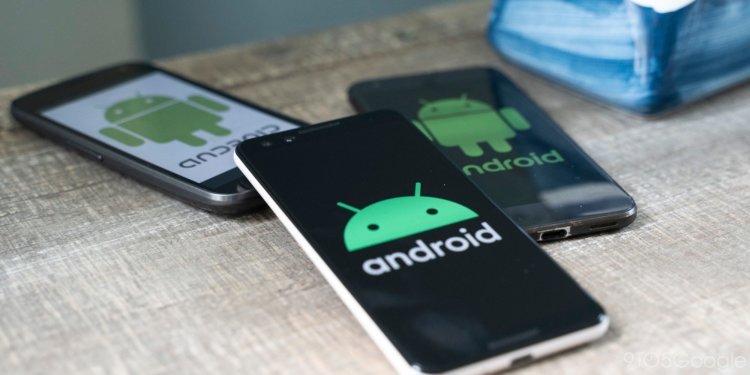
Google has released beta version Android 11. You can download it now
These are system changes that can affect the operation of applications. Let's start with the permissions changes. In Android 11, users can fine tune location, microphone and camera permissions. To be more precise, now the user can only grant access to the above listed objects once. Nowadays it is possible to grant access to an application forever, which, of course, is not very good in terms of security. In addition, if the user has denied the permission request twice, the system will display a 'Don't ask again' button to avoid spamming the user with modals.
Developers also need to change how the app accesses the location in the background. Now the application cannot access using the modal window. To do this, a message should appear on the screen explaining the need for this permission, and only after that the user must independently grant the application rights.
Now it is difficult to get the rights to the system files. To do this, the application will also need to provide a link to the corresponding internal menu, in which the user must independently provide access to the files.
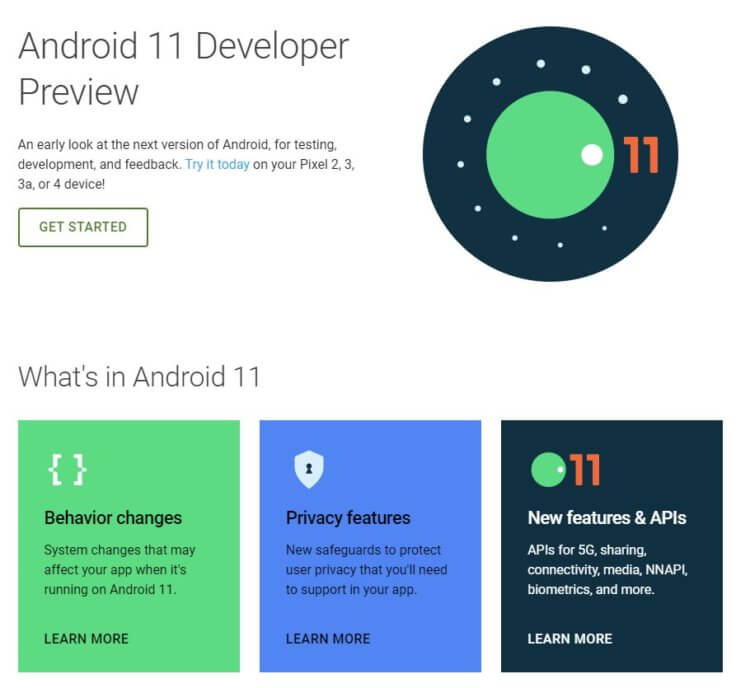
Released Android 11
Android 11 uses Scoped Storage as standard. We have already written about this solution. It allows an application to request access only to specific files, and not to the entire file system. In addition, each application has a separate area of memory in the system that is isolated from other applications. This way, no application will be able to access the files of another application. One-time permission and background location access are also part of the security section. We have already described the essence of these changes above.
Some monitors have built-in means to improve the picture, but the data transfer rate suffers – there is a noticeable delay. New displays with HDMI 2.1 support have an Automatic Low Latency Mode (ALLM) that minimizes latency by disabling post-processing. Android 11 can now understand if the TV supports this mode, and will offer to activate it when connected. This is especially useful for gaming and video conferencing where every millisecond counts.
In Android 11, the API for working with neural networks was also improved, and the work with biometrics was also improved. A nice innovation in the update will be a new file system:
Google is working on a new – incremental – filesystem for Android, which will debut in future updates Android. This is an advanced analogue of the virtual file system Linux. It will allow you not only to use applications during the installation of updates, but also to activate them during the initial download. That is, in order to launch the game, it will be enough just to click on the download button in Google Play, and the game world will begin to load gradually as you progress.
We talked about it in more detail in a separate article.
Already, the update can be installed by owners of smartphones Google Pixel 2/2 XL, Pixel 3/3 XL, Pixel 3a / 3a XL, Pixel 4/4 XL. Using this link, you can go to the download images page.
Google adds document digitization feature to Android 11
I think no one will argue that a smartphone today is perhaps the most personal thing for every person, which can tell everything about us inside and out. Even if we leave aside photos and correspondence, there are still banking applications, passwords from social networks, search history and travel history with a list of the most visited places. Get your smartphone into the wrong hands, and their owner will be able to find out a lot of things about you that you, perhaps, yourself did not even know about. But soon there will be even more information that mobile devices will store in their memory.
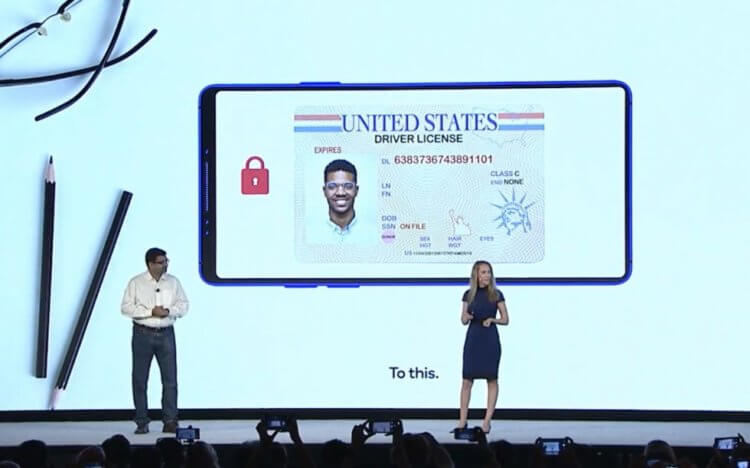
Android 11 will be able to digitize documents by default, but not all
In Android 11, the first test build of which was released last night, there will be tools for digitizing and storing documents. While these are just references to the corresponding functionality, however, Google has already confirmed its appearance, which means that by the time the update is released, owners of compatible devices will be able to turn them into a reliable repository of their documentation.

Digitization of documents is an extremely complex issue that requires careful study
Despite the fact that while the necessary tools in Android 11 do not work, it is known that digitization will be done via NFC without using the camera. It turns out that in order to enter into the memory of a smartphone, say, a driver's license, you need to activate the digitization function and attach them to the back of the device for reading. It is clear that this requires a biometric driver's license, while an old-style document will not work for this. But the very fact that such an opportunity will soon appear inspires respect for the developers.
Strange as it may seem, it is rather difficult to implement the possibility of digitizing documents. After all, it's not enough just to make a smartphone scan an RFID tag that is built into an ID card; you also need to teach it to verify. To do this, Google had to obtain an appropriate permit from the Interstate Council for Standardization, Metrology and Certification, which verified the scanning methods used in Android, and confirmed its reliability and safety. But since each document requires a separate certificate, at the initial stage only a driver's license can be scanned.
But that's not all. In order for Google to be allowed to store documents in the memory of smartphones, it had to redesign the file system Android in a special way in order to allocate a protected section in it, where all digitized documents would be saved. You can't just extract them from there. To do this, you need a special reader, like the one used at airports. But since you cannot cross the border with a Russian driver's license, most likely, we will not have any sense from the digitization function until it is allowed to enter a passport into the smartphone's memory.
Despite the fact that personally I have never become a victim of a malicious attack or spyware applications, I would be careful not to add a digital copy of my document to the memory Android of my smartphone. Still, knowing the ease with which Google often approaches the issue of ensuring the security of its operating system, preparing security updates for future use and not releasing them for a month or more just in order not to break the cycle, there is no confidence in the reliability of the digitization tool yet.
Samsung, Razer and Asus smartphones now support Google Stadia
Smartphone manufacturers strive to use the highest performing chipsets in their gadgets. And these times, when the processor model will be important to someone, will very soon become a thing of the past. And it's all about the development 5G and streaming services. Currently, the most popular such solution is the Google Stadia project, which was previously only available to owners of Pixel smartphones. But things are changing, and Google has added support for a number of Samsung, Razer and Asus smartphones.

Samsung, Razer and Asus smartphones now support Google Stadia
The list of Google Stadia-enabled devices is as follows:
- Samsung Galaxy S8
- Samsung Galaxy S8 +
- Samsung Galaxy S8 Active
- Samsung Galaxy Note8
- Samsung Galaxy S9
- Samsung Galaxy S9 +
- Samsung Galaxy Note9
- Samsung Galaxy S10
- Samsung Galaxy S10E
- Samsung Galaxy S10 +
- Samsung Galaxy Note10
- Samsung Galaxy Note10 +
- Samsung Galaxy S20
- Samsung Galaxy S20 +
- Samsung Galaxy S20 Ultra
- Razer Phone
- Razer Phone 2
- ASUS ROG Phone
- ASUS ROG Phone II
A total of 19 new phones are presented, and if we take into account Google devices, the total number of smartphones with Stadia support was 27, which is not so bad. It's also surprising that Google decided to add support for even the rather outdated Galaxy S8 – the phone was introduced back in 2017 and became the first frameless device on the market, which is why, by the way, even in 2020 it still looks good.
Google has been testing Stadia on non-Pixel devices since the beginning of January, and only now – after lengthy tests – they decided to add official support. Support for the above devices will be rolled out gradually, meaning that not all users will be able to play games through Stadia right now. However, no updates are required. Streaming will be available automatically. So far, the service can only work over Wi-Fi and does not support mobile networks. Probably the reason for this is poor distribution 5G. Obviously, 4G resources will not be enough for this.

We have already written material on this topic, but we will repeat ourselves. Stadia is a streaming service that lets you play PC games like Read Dead Redemption 2, Assasins Creed, and other AAA projects over the Internet. The service makes it possible to play on TV, laptops, desktops, tablets and smartphones – wherever there is Wi-Fi.
So far, unfortunately, when you try to buy a subscription, which is equal to 10 dollars, the service redirects to a page with a message that Russia is not yet supported. However, by analogy with YouTube Premium, I do not exclude that Stadia will work in Russia in the near future. And this will be expected, because our Internet is much better than in the United States. By the way, this is why, most likely, when launching the service, many complained about the lag of the character's actions from the clicks on the gamepad.
Although the Stadia gamepad can monitor users, it is not necessary to buy one to use the service. You can connect to the device and conventional gamepads from the same Microsoft or Sony. But Google wouldn't just release the Stadia Controller. Its feature is the ability to connect via Wi-Fi directly to Google servers to reduce latency. In addition, the gamepad has two function keys, one of which takes screenshots, and the other calls the Google Assistant voice assistant.
Now the main problem is the absence of Russia in the list of supported countries. And it is not yet entirely clear when Google will decide to please Russian gamers as well. And if Stadia becomes popular, there is no doubt that mobile gaming will die out. Developers will focus on creating solutions for Windows in order to stream them to smartphones in the future. Why overload your phone when you can use cloud resources? The future belongs to this. We can even assume that the mobile app market will die out, leaving cloud streaming and PWA.
What do you think about this? Share your opinion in the comments and read our news in Yandex Zen.
Advertising banners found in Galaxy Z Flip for 120 thousand rubles
The Galaxy Z Flip was unveiled on February 11 at the Unpacked 2020 presentation. This is not the first smartphone in a similar form factor, the sales of the Motorola Razr began earlier, which was the first phone with a horizontal hinge. Both phones cost a lot of money, but one of them offers users in-system ads and the other doesn't. Coated advertising has already become the norm for many manufacturers. If earlier users admired banners only in games, applications and websites, today they are met by advertising in the system itself. And this certainly cannot evoke emotions of delight.
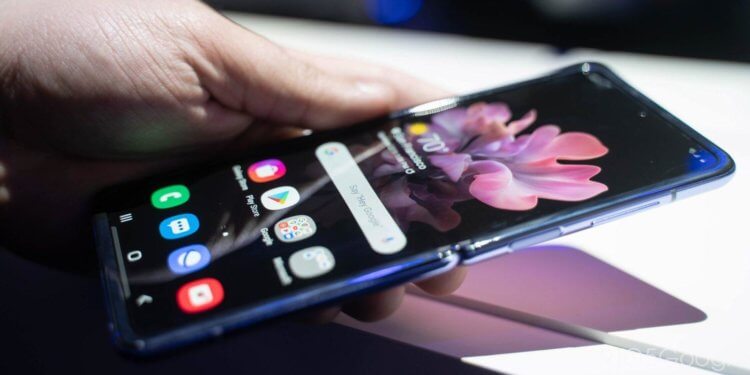
Advertising banners were found in Galaxy Z Flip for 120 thousand rubles
Nowadays, many Chinese manufacturers are inserting ads into their phones. A company Xiaomi would be a good example. I, as the owner of such a device, can confirm the fact that MIUI feels like a good operating system with many bugs, imperfections, a bunch of garbage applications and ads.
Want to change your desktop wallpaper? In this case, a service application will open that includes paid themes. And this is all over the system – everywhere there is some kind of mess, a lot of rubbish and unnecessary software.
Recently, Samsung smartphone users started complaining about ads, and the Galaxy Z Flip was no exception. A photo of a phone has appeared on the web with the “Phone” application running with an advertisement in the center. How do you like that?
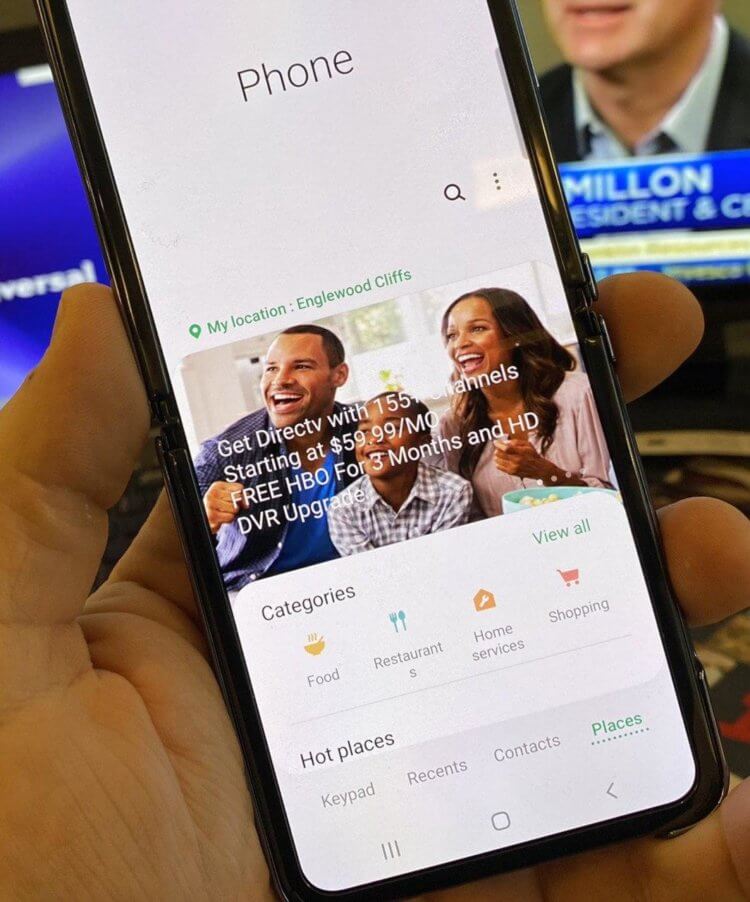
Advertising on Samsung Galaxy Z Flip phone
And if in the case of Xiaomi everything depends on the low cost, then in the case of Samsung it is not entirely clear why users of a phone for 120 thousand rubles should look at ads. Then you can buy iPhone for the same money, where there is nothing like this.
The fact is that Xiaomi practically does not profit from their devices. In 2017, the company earned just $ 2 from each phone. Today, I think this figure is much higher, but it is still obvious that when you sell a device with AMOLED – screen, 6 GB of RAM and Snapdragon 710 processor for 14 thousand rubles, while Motorola Razr with similar hardware is priced at $ 1,500, then, of course, you are forced to use advertising in the operating system in order to somehow compensate for the low profit from phone sales. And this, however, I agree in the case of Xiaomi.
But the situation with Samsung in this matter is more interesting. The company might not be inserting ads into flagship phones, but it does it anyway. I think this is, rather, a mistake, and the Koreans hardly wanted to use advertising on the phone for 120 thousand rubles. The presence of advertising in One UI is due to the low cost of phones in the budget and mid-budget segment. If you look at the Galaxy A line, you can understand that 20 thousand rubles for the A51 is not such a big amount. In addition, Samsung has hundreds of stores in Russia alone. But you have to pay for the rent of the premises, and the shop workers also have to pay. Unlike Xiaomi, Samsung's expenses for such things are much higher, and that's why the presence of advertising in the operating system can be justified, but only if we are talking about the inexpensive Galaxy A line. In the case of flagships, this certainly unacceptable, in my opinion.
In January, it was reported that ads would also appear on smartphones Huawei and Honor. An ad was found on a smartphone running Harmony OS with Huawei Mobile Services. The section of the user agreement describes how advertising works. Probably Huawei decided to follow the example of not only Samsung and Xiaomi, but also Realme.
Oppo recently started rolling out a ColorOS 7 update for devices Realme, which includes a recommendation display feature by default. Recommendations mean the presence of advertising banners. They can be turned off in the settings, just like on the phone Xiaomi, but most users won't even be able to find a switch that turns off ads.
Let's discuss this topic in Telegram.
AliExpress is flooded with copies of popular smartphones Huawei and Samsung
To be honest, I already forgot the last time I saw a clone of a popular smartphone. I don’t know what it’s connected with, but copies of AirPods or Beats headphones are sold in bulk today both in China and far beyond its borders, but you’ll hardly find fake iPhone or flagship Samsung Galaxy in the public domain. Most often, if something like this comes across, it is only on some tech market in the Middle Kingdom or on the websites of scammers who issue copies for 'customs confiscated' and sell them for 5-10 thousand rubles, obviously not counting on a large audience. But at some point something went wrong.
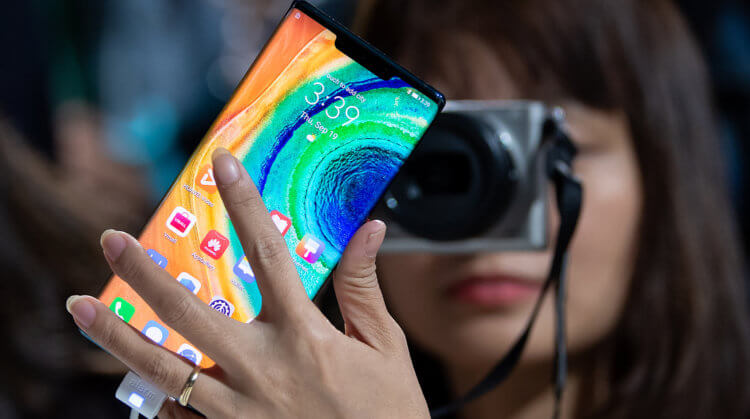
I never thought that the Chinese would copy Chinese smartphones
Recently, a lot of fakes of popular flagships from Huawei and Samsung have appeared on AliExpress. Despite the fact that they all come out under the Kimtien brand, which has nothing to do with the manufacturers, they copy the appearance of the original devices 100%, and also try to use parts of their names in the names of their copies, obviously to attract the attention of consumers. So the clone Huawei Mate 30 Pro became Kimtien Mate 30 Pro, and the clone of Galaxy Note 10+ became Kimtien Note 10+.

A lot of fakes appeared on AliExpress, beware
Kimtien's trade policy is rather unusual. On the one hand, the Chinese do not pretend that they are selling original products, since they put their own brand on smartphones that are offered on AliExpress, and they do not break prices. Therefore, a Galaxy Note 10+ clone can be bought for about five times cheaper than the original: for $ 200 versus $ 1000 from Samsung. And all would be fine, but Kimtien indicates completely unrealistic characteristics for their smartphones, probably counting on a very primitive audience.
If you open the page with the characteristics of any of the clones from Kimtien, you will see that the manufacturer claims a truly flagship hardware for them. Snapdragon 855 is often indicated as processors, the amount of RAM is either 6 or 8 GB, and the display resolution is 2K. In addition, you can sometimes find a mention of a hardware facial recognition sensor similar to Face ID from Apple. Representatives of Kimtien are not very confused by the fact that in the original devices, much of what they indicate is simply not there. The same Huawei Mate 30 is powered by the Kirin 990, not the Snapdragon 855, and there are plenty of such punctures.
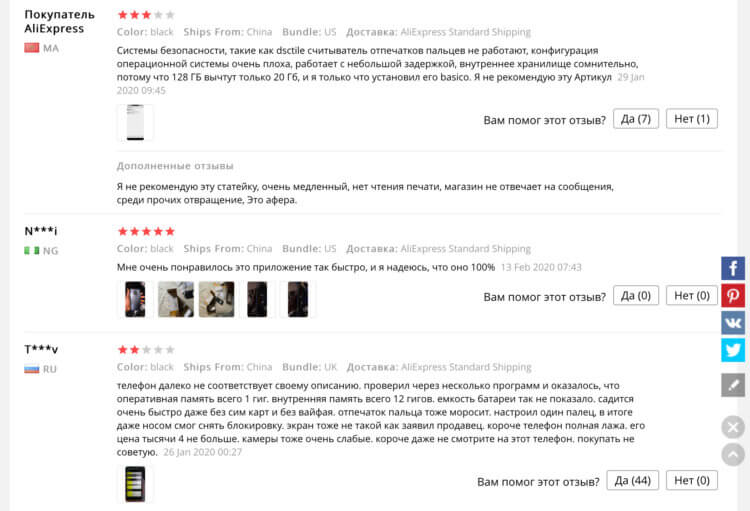
Read reviews on AliExpress to know what you are buying
Needless to say, nothing of the promised copies from Kimtien can boast. According to the reviews of the buyers themselves, very pass-through processors MediaTek are most often used as the hardware basis for counterfeit smartphones, and their RAM rarely exceeds 3 GB. But this is already a real deception. After all, you can find fault with the appearance of smartphones as much as you like, and Kimtien will have a concrete excuse, which is that she did not declare these devices as original, but with iron everything is much more serious.
AliExpress's rules are quite strict with regard to counterfeit merchants, so the site tries to calculate and block them, and refunds money to buyers who had the misfortune to buy something from them. However, before that happens, AliExpress will have to investigate and investigate the case. Therefore, if you order smartphones on this site, be extremely careful, carefully check what exactly you add to the cart, read reviews and do not get fooled by too low prices, because free cheese is only in a mousetrap.
